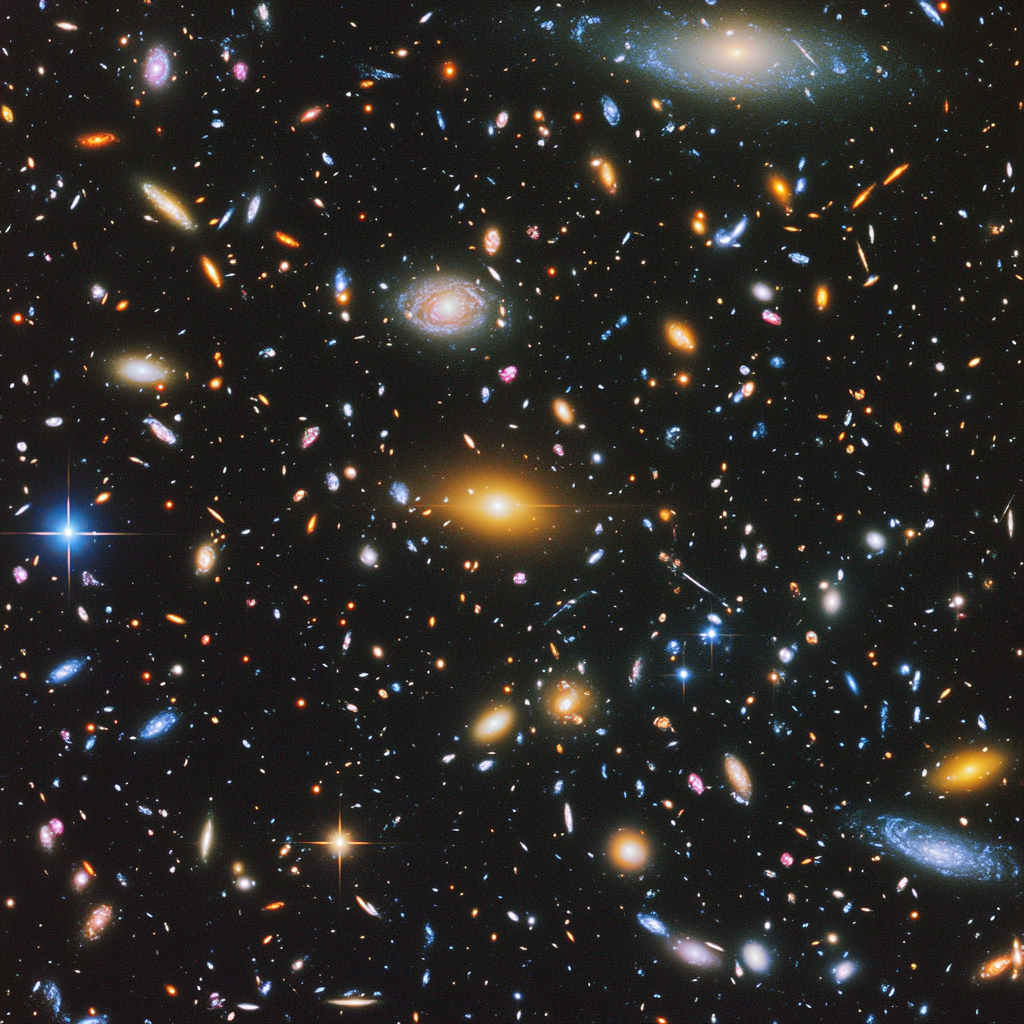
Exploring the Abyss: ESA’s Euclid Telescope Unveils the Dark Universe
Imagine standing at the brink of the universe, the shimmering stars beckoning like old friends, while the shadows of dark matter and dark energy whisper their secrets. Enter the enchanting realm of the European Space Agency's (ESA) Euclid mission — the cosmic sleuth set to decode the perplexing mysteries of our universe. Launched on July 1, 2023, this mission isn't just another satellite thrown into the void; it's a six-year adventure that aims to design the most comprehensive three-dimensional map of the universe ever constructed, spanning nearly a third of the night sky and striving to gaze upon a staggering 1.5 billion galaxies.
Picture this: an exquisitely engineered space telescope, sharper and more discerning than the keenest human eye, set loose in the cosmic wilderness where bright stars twinkle, distant galaxies vibrate with ethereal light, and worlds never glimpsed before wait patiently in the dark. Euclid has already begun to dazzle astronomers with its breathtaking images. Its inaugural snapshots of the Perseus Cluster revealed over a thousand galaxies nestled together like timeless companions, all framed by a backdrop of more than 100,000 distant galaxies. Imagine what this will mean for our understanding of galaxy evolution! This is not mere pixel art; it's the unveiling of a cosmic tapestry that allows scientists to pull back the curtain on the intricate dance influenced by dark matter and dark energy over eons.
Ah, dark matter and dark energy—the enigmatic shadows that dominate a whopping 95% of our universe. Picture this: dark matter, like an invisible puppeteer, guides galaxies into clumps, while dark energy drives the relentless expansion of the universe. These forces are as ungraspable as smoke in the wind, and yet, by examining how galaxies twist and contort under their influence, Euclid is poised to shed some much-needed light. It's a cosmic investigation that promises to answer age-old questions: How have these forces sculpted the universe as we know it?
The recent launch of Euclid's deep field images has flung wide the gates to the cosmos like never before. In a mere week, this stellar time machine captured 26 million galaxies, weaving a sweeping narrative of the universe's cosmic web. Chaos and beauty collide, with vivid clusters of galaxies, active galactic nuclei buzzing with energy, and transient events flaring like fireflies in the dark of space. And let’s not overlook the interplay of human ingenuity and cutting-edge technology; artificial intelligence and citizen science have already found over 500 fresh gravitational lens candidates, pivotal players in understanding dark matter's elusive distribution throughout the universe.
But hold on! Euclid isn't just in the business of deciphering dark secrets—it's also winning hearts with delightful discoveries. More than 2,674 new dwarf galaxies were unearthed, inviting us to rethink how galaxies grow and evolve across the cosmos. And if that’s not enough, this cosmic explorer is also capable of identifying free-floating planets and mapping star-forming regions in fantastic detail. Who would have thought that in our search for universal truths, we would stumble upon such hidden gems along the way?
Every glance into the deep fields captured by Euclid is a reminder of both the awe-inspiring beauty and the intricate complexity that our universe holds. With each successive observation, we inch ever closer to deciphering the fundamental laws of physics and peeling back the layers of existence itself. The universe is not just an expanse of blackness filled with stars; it’s a living dialog, a confluence of forces, an epic saga that invites us all to partake in its unfolding story.
So, what's next in this cosmic odyssey? What revelations lie waiting just beyond the horizon? Each new observation from the Euclid mission promises to electrify our imaginations and redefine our very understanding of the cosmos. Join us in this epic quest to unveil the mysteries of the universe with ESA’s Euclid, and get ready for a future bursting with groundbreaking discoveries! With every passing day, the cosmos holds its breath, waiting to share its tales with us—are you ready to listen?
Want to stay up to date with the latest news on neural networks and automation? Subscribe to our Telegram channel: @channel_neirotoken.

